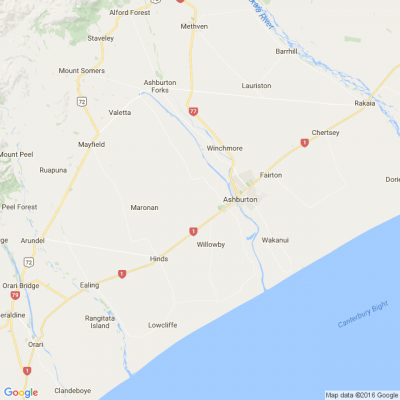Tinwald School road safety fears being considered
By local democracy reporter Jonathan Leask:
A Canterbury school near a busy road is hoping fears over vehicle speeds will be addressed when the council reviews school speed zones later this year.
Tinwald School's board of trustees raised safety concerns about the stretch of Graham St bordering the school, particularly between Thomson and Harland streets, with the Ashburton District Council earlier this year.
Board presiding member Chris Hill raised the safety concerns in April.
“There has been a significant increase in the volume of traffic that travels this stretch of road. And as a result, has caused a heightened level of anxiety and safety concerns,” Hill told councillors at the time.
An “informal review” by the school had estimated a conservative figure of between 90 and 160 cars travelling along Graham St during school pick-up and drop-off times.
Council data shows that the average speed on Graham St is 47kph with over 2000 vehicles daily.
The council had introduced permanent 30kph urban school speed zones in July last year, but in February determined that the speed limits would become time-restricted as soon as the Government amended rules governing the setting of speed laws.
The minister of transport’s redrafted rule is out for public consultation and is scheduled to be changed by the end of the year.
Tinwald School wants Graham St added to its existing 30kph zone, and the council’s road safety co-ordinating committee has recommended it be included when the time restrictions are introduced.
Hill told the Local Democracy Reporting he was pleased to see the concerns were being addressed by the council.
“There has been positive communication with the council and hopefully we get to a resolution to improve the safety of our children.”
Roading manager Mark Chamberlain previously stated that Graham Street was not initially included when the council introduced the speed reduction because there is no access to the school off the street.
The logical solution will be a variable speed limit being considered when the council revisits speed zones following the law changes, Chamberlain said.
Tinwald School’s concerns also included the crossing points on Graham St, suggesting relocating the pedestrian crossing.
The council met with the school’s board on Thursday afternoon to discuss installing better pedestrian crossing signage and the possibility of the school running a crossing patrol at the Graham St crossing.
The recent Tinwald corridor upgrade included the creation of a safe route to Tinwald School that encourages pupils walking or biking to school to use the new traffic signals, and the shared paths on Agnes and Thompson streets that lead to the Graham St pedestrian crossing.

Poll: Are our Kiwi summer holidays helping us recharge, or holding the economy back? ☀️🥝
There’s growing debate about whether New Zealand’s extended Christmas break (and the slowdown that comes with it) affects productivity.
Tracy Watkins has weighed in ... now it’s your turn. What’s your take? 🤔

-
73.3% We work hard, we deserve a break!
-
17.1% Hmm, maybe?
-
9.7% Yes!
A riddle to start the festive season 🌲🎁🌟
I'm a fruit. If you take away my first letter, I'm a crime. If you take away my first two letters, I'm an animal. If you take away my first and last letter, I'm a form of music. What am I?
Do you think you know the answer? Simply 'Like' this post if you know the answer and the big reveal will be posted in the comments at 2pm on the day!
Want to stop seeing these in your newsfeed?
Head here and hover on the Following button on the top right of the page (and it will show Unfollow) and then click it. If it is giving you the option to Follow, then you've successfully unfollowed the Riddles page.

Poll: Should we be giving the green light to new mining projects? 💰🌲
The Environmental Protection Authority announced this week that a proposed mine in Central Otago (near Cromwell) is about to enter its fast-track assessment process. A final decision could come within six months, and if it’s approved, construction might start as early as mid-2026.
We want to know: Should mining projects like this move ahead?
Keen to dig deeper? Mike White has the scoop.

-
53% Yes
-
47% No






 Loading…
Loading…